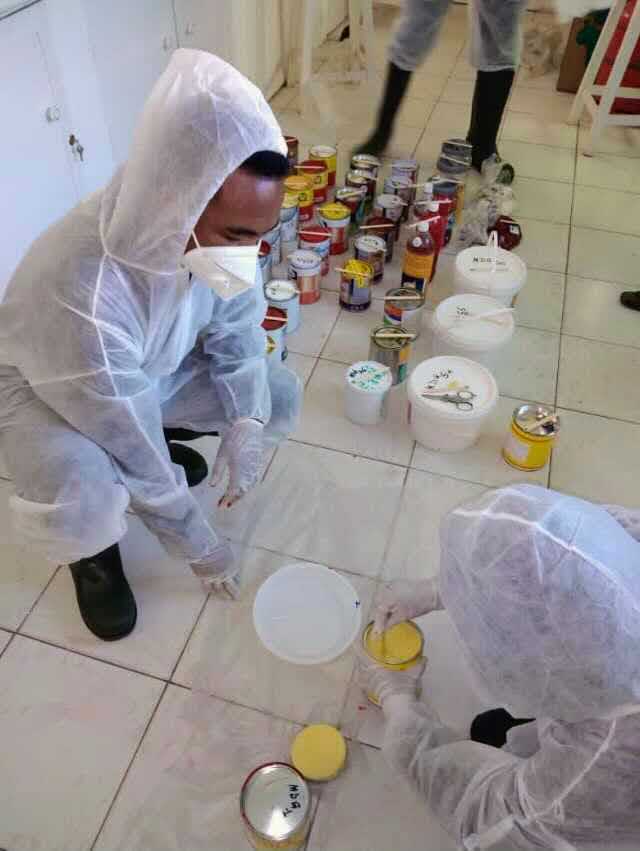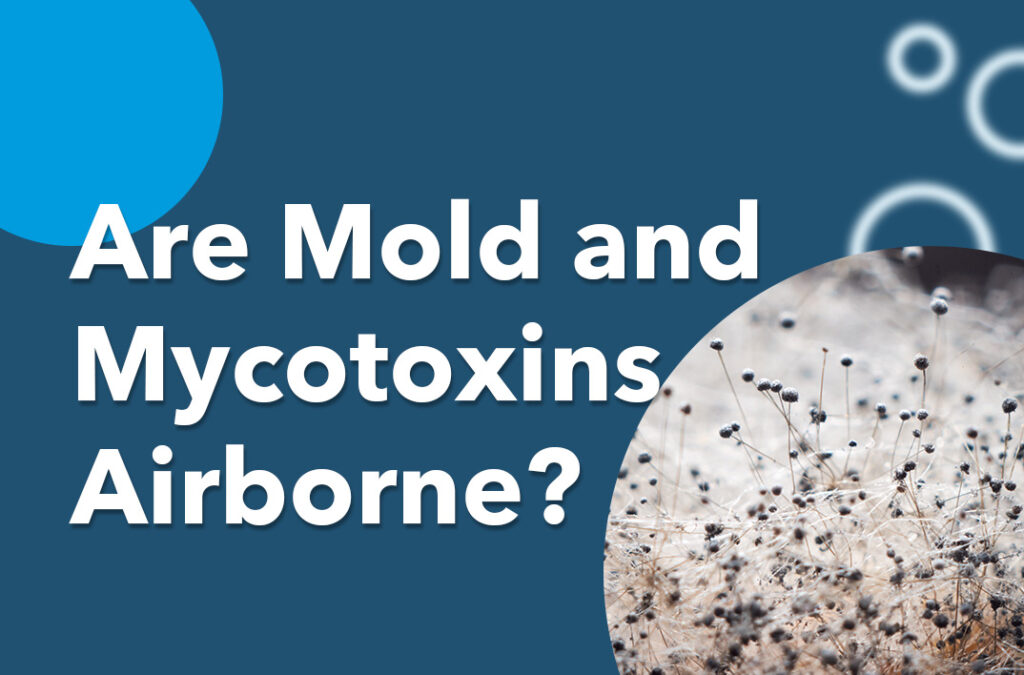Comprehending the Importance of Dependable Mycotoxin testing Services
Comprehending the Importance of Dependable Mycotoxin testing Services
Blog Article
Just How Mycotoxin Screening Helps Avoid Contamination and Secure Food Products

Mycotoxin testing is an essential practice in the food industry, functioning as a frontline protection against contamination by hazardous toxins generated by mold and mildews. Through the application of sophisticated strategies like High-Performance Fluid Chromatography (HPLC) and Liquid Chromatography-Mass Spectrometry (LC-MS), food producers can accurately measure and spot mycotoxin degrees in farming products. This aggressive technique not just makes sure compliance with stringent safety and security guidelines but additionally minimizes health and wellness risks to customers. Regular testing strengthens brand online reputation and monetary health by minimizing contamination-related events. So, just how precisely do these screening protocols incorporate into the wider food safety method?
Recognizing Mycotoxins
Comprehending mycotoxins starts with acknowledging that they are hazardous additional metabolites created by specific mold and mildews, which can pollute agricultural products. These metabolites are not essential for the growth or reproduction of the fungis yet can have extreme effects for animal and human health. Mycotoxins are commonly found in staple plants such as corn, wheat, barley, and nuts, where they can multiply under certain conditions of dampness and temperature level.
There are several types of mycotoxins, each generated by different fungal types. Fusarium varieties produce fumonisins and trichothecenes, both of which are linked with different acute and persistent wellness problems.

Dangers of Mycotoxin Contamination
The risks of mycotoxin contamination are complex, posing considerable dangers to both food safety and public wellness. Mycotoxins, hazardous substances generated by particular kinds of fungis, can pollute a variety of agricultural products including grains, nuts, flavors, dried fruits, and coffee. Once these contaminants penetrate the food supply, they can cause severe health and wellness issues such as liver damages, kidney failing, and also cancer. Vulnerable populaces, including children, the senior, and immunocompromised people, are especially at risk.
Financial influences are one more significant issue. Infected crops can lead to significant financial losses for farmers and food manufacturers due to decreased returns and the need for expensive purification steps. Global profession can be dramatically impeded as countries impose stringent mycotoxin regulations to safeguard their populaces, leading to denied shipments and strained trade relations.
Environmental aspects such as environment adjustment aggravate the risk of mycotoxin contamination. Variations in temperature level and moisture can develop favorable conditions for fungal growth, increasing the possibility of contamination events. Thus, understanding and reducing these dangers are vital for ensuring the safety and integrity of global food supplies.
Methods of Mycotoxin Testing
Properly recognizing mycotoxin contamination in farming items is necessary for guarding public wellness and preserving food security requirements. Different techniques are employed to spot and quantify mycotoxins, each offering particular advantages and limitations.
High-Performance Fluid Chromatography (HPLC) is an extensively made use of approach because of its high sensitivity and precision. It involves dividing mycotoxins from various other compounds in a sample, enabling accurate metrology. Liquid Chromatography-Mass Spectrometry (LC-MS) combines fluid chromatography with mass spectrometry to supply comprehensive molecular information, making it particularly useful for determining multiple mycotoxins concurrently.

Gas Chromatography-Mass Spectrometry (GC-MS) and Thin-Layer Chromatography (TLC) are also employed, each with special applications. GC-MS works for unpredictable mycotoxins, while tender loving care offers an easier, economical choice for initial testing.
Advantages of Regular Evaluating
Normal testing for mycotoxins in agricultural products offers numerous benefits, considerably adding to public health and wellness and food security. By determining contamination early, routine screening helps avoid the distribution of hazardous foods, thereby reducing the danger of mycotoxin-related diseases amongst customers. This proactive technique not only safeguards human wellness yet likewise enhances the total high quality of food supplies.
Consistent screening additionally supports governing conformity. Different nations and areas have developed stringent restrictions for mycotoxin levels in food and feed. Complying with these limitations with normal testing ensures that manufacturers and suppliers meet lawful standards, thereby preventing penalties and trade obstacles. Preserving compliance fosters customer trust fund and brand credibility, which important source are essential for market success.
In addition, routine mycotoxin screening can result in significant financial advantages. Early discovery of contamination enables prompt treatment, minimizing potential losses from prevalent contamination. Implementing routine screening methods can also decrease recall expenses and relevant obligations, which can be financially ravaging.
Furthermore, routine testing supplies valuable information that can notify far better agricultural methods and storage space conditions. By understanding patterns of contamination, producers can adopt preventive steps, consequently adding and minimizing future dangers to the sustainability of the food supply chain.
Carrying Out Evaluating Procedures
Carrying out efficient mycotoxin screening procedures is important for ensuring the security and high quality of farming products. Each stage needs to be looked at to determine where mycotoxin contamination is most likely to happen.
When vital control points are identified, choosing ideal testing approaches is vital. Usual methods consist of enzyme-linked immunosorbent assay (ELISA), high-performance liquid chromatography (HPLC), and mass spectrometry (MS) Each technique has its weaknesses and staminas; therefore, choosing the proper one relies on the certain mycotoxin being evaluated, the required level of sensitivity, and offered resources.

Lastly, incorporating the testing procedures right into a comprehensive food safety and security management system is suggested. This boosts traceability and allows quick restorative actions when contamination is spotted, thus protecting the integrity of the food supply chain.
Conclusion
Mycotoxin testing is essential in preventing contamination and protecting food products by enabling very early discovery of damaging contaminants produced by mold and mildews in agricultural products. Advanced approaches such as HPLC and LC-MS guarantee conformity with safety and security policies and safeguard customers from wellness risks. Routine screening enhances brand online reputation, financial stability, and count on food safety by reducing contamination-related losses and keeping high criteria in food production. Carrying out Visit This Link strenuous screening protocols is therefore imperative for the industry's general well-being.
Mycotoxin testing is a vital method in the food market, serving as a frontline defense versus contamination by hazardous contaminants produced by molds. An integrated method involving agricultural techniques, storage space monitoring, and normal testing his response can reduce the risks associated with mycotoxin contamination, making certain food safety and public health.
The dangers of mycotoxin contamination are complex, positioning considerable hazards to both food safety and public health.Regular screening for mycotoxins in farming products offers countless advantages, substantially contributing to public health and food safety and security.Mycotoxin screening is vital in avoiding contamination and safeguarding food products by making it possible for early discovery of unsafe toxic substances produced by mold and mildews in agricultural products.
Report this page